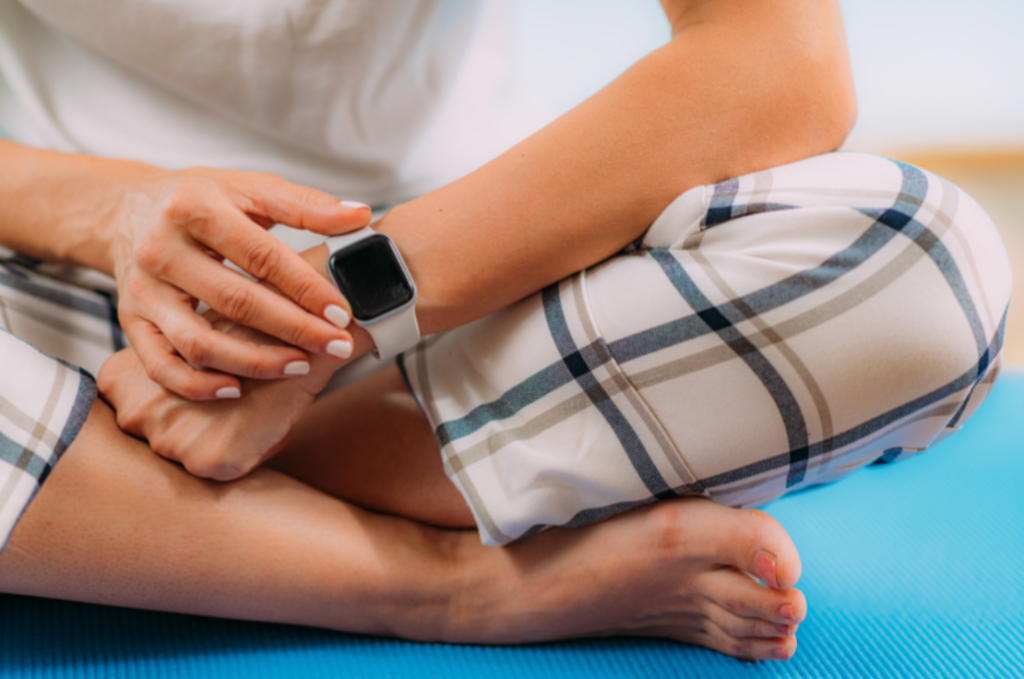Over the past few decades, the way we practice medicine and the way patients approach their health has changed dramatically for the better. Staying healthy is no longer a mystery. Finally, for many people, lifestyle modifications and upgrades have become the first line of defense against the “cure-all” – the default setting of conventional medicine.
With the advancement of integrative medicine, patients have seen firsthand how behavioral upgrades, such as eating a healthy diet, scheduling more exercise throughout the day, and practicing gratitude, mindfulness, and stress reduction, can have a significant impact on the way they look and feel now, and reduce the risk of serious illness later in life.
Technology can also play an important role. Wearable trackers (in conjunction with apps) can help facilitate the process of self-care. An often overlooked but very useful health indicator, I encourage everyone to track their heart rate variability (HRV). Learning more about your HRV can give you a better understanding of your cardiovascular health and your overall resilience, as well as help guide you to adopt daily behaviors and lifestyle adjustments that are more conducive to good health. Think of HRV as an on-demand monitoring and feedback system for doing the things that keep you healthy. Here are the key points about this fascinating but still somewhat unknown tool that can help you achieve optimal health:.

HRV has to do with timing.
While you may not be familiar with the term, heart rate variability (HRV) is really just a measurement of the time between heartbeats. If your heart rate is about 60 beats per minute, it’s not necessarily beating every second. It may beat for 0.5 seconds between beats and 1.30 seconds between beats-in other words, it’s variable, which is actually a good thing, and it’s a better indicator of cardiovascular health and adaptability. In general, the time between beats is shorter in the presence of a stressor. Heartbeat intervals (in milliseconds) are longer when you are relaxed or sleeping. The time between beats is controlled by your autonomic nervous system (ANS), just like other functions such as heart rate, digestion, blood pressure, breathing, and even sexual arousal.
HRV takes its orders from your relaxation and fight or flight responses.
The ANS is driven by two yin and yang components, the Sympathetic Nervous System (SNS) and the Parasympathetic Nervous System (PSNS.) The SNS deals with the fight or flight response, while the PSNS deals with the relaxation response.
So, when social networking activity increases, i.e., when stress rises, your heart rate (the time between heartbeats) decreases. When PSNS activity increases – relaxation rises – HRV increases. When there is a greater difference between heartbeats, this indicates that the ANS is managing both the SNS and PSNS without major disruption and responding to the day’s stimuli with balance and resilience. If you are doing a good job of eating, sleeping, exercising, maintaining healthy relationships and socializing, then HRV will adapt well to your internal and external environment.
Poor health habits can sabotage your HRV.
However, if you are dealing with typical troublemakers such as constant stress, chronically poor diet, lack of sleep, lack of exercise, and/or poor relationships, the fight-or-flight response can clog up the system and shorten the heartbeat intervals. Have you ever had a super stressful week where you felt too tense to relax, like you couldn’t quite get back to normal? That’s a good clue that your heart rate needs some monitoring, eventually, tends to.
Monitoring your HRV now can prevent health problems later.
Well, you may be asking yourself, what does HRV have to do with my life? One particularly practical application is for medical practitioners. For us, your HRV data provides a simple, non-invasive window into your autonomic nervous system, as does useful information about how you respond (or don’t respond) to stress and how well your body recovers from it. A low HRV suggests that you’re chronically overdriving and that you may need to activate your parasympathetic nervous system – in rest and digest mode – more than you do now. Think of your HRV as the canary in the coal mine, and it will alert you if your future is less than healthy.
Collect HRV data and keep it honest.
So how do you monitor your heart rate on your own? Wearable fitness trackers are a great and convenient way to start collecting your HRV data in addition to monitoring many other key functions. You can see in real time how your body is reacting to your lifestyle and behavioral choices, where you’re sabotaging it, and where you may need to adjust behaviors (or even major interventions).
To help patients begin to make sense of the data their bodies are generating every day, in my practice we often recommend the Apple Watch, or the elegant, health-tech jewelry product Oura Ring, a wearable fitness tracker that is inconspicuously worn on the index finger. Both track heart rate, as well as many other body signals and behaviors. Like a mobile version of an old-fashioned EKG – which you probably get once a year at the doctor’s office (if at all) – the trackers can give you a very comprehensive picture of your daily cardiovascular health. These numbers will help keep you honest, rewarding your efforts when you’re doing well and reminding you to get back on the road to health when you falter.
Let the power of HRV work.
While you can expect some minor variations in accuracy (trackers aren’t foolproof yet), another important way to use HRV data is to look at patterns. By this I mean, what happens to your HRV through different health tweaks and interventions? What are the real-time effects of eating less sugar? Eating lighter at night; drinking more water every day; meditating; exercising more, different types of exercise? It’s eye-opening when patients get real-time feedback on how different behaviors affect their nervous system and HRV.
Remember, unlike other features you may be tracking, HRV varies greatly over the course of the day, so don’t be alarmed by a very high or low number. Make sure your tracker has HRV data/algorithms based on multiple dynamic readings over the course of days or even weeks.
Upgrade your HRV game.
In my opinion, any tool that helps inspire change and keeps you motivated is worth incorporating into your life. This is not to say that one should live or die by the numbers, but use them as a guide to increase your awareness of your body, how it works, and how it reacts. Being able to track and identify behaviors or stimuli that trigger an increase in stress levels and a decrease in HRV gives you the ability to turn things around before the wave washes you away. Granted, you can’t stop the stress in your life from happening, but you’ll suffer less from it and gain more control over your health and life.
To up your HRV game, incorporate the necessary things to help you move the dial in the right direction, i.e.: Eat well, sleep well, stress management, meditation/positive thinking and exercise, rest and recovery. Give up sugar and alcohol, try to incorporate sauna and/or cryotherapy into your life, and in extremely stressful situations, take deep, relaxing breaths to calm down and help reset your nervous system. If you’re looking for an app to support you, two worth exploring are the HRV4Biofeedback app and Heartmath’s Inner Balance Trainer.



